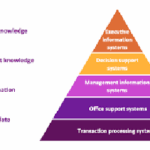What Are Leadership Tools?
Leadership tools refer to the structured methods and instruments managers use to guide, motivate, and develop employees. These tools work in tandem with leadership styles and techniques to help align individual performance with organizational objectives.
Effective leadership tools may include:
-
Goal-setting frameworks (e.g., OKRs, SMART goals)
-
Performance feedback systems
-
Delegation models
-
Coaching and mentoring techniques
-
Motivational incentives (→ reward and punishment)
-
Conflict resolution methods
The Leadership Mix: A Balancing Act
Successful leaders combine various tools and styles based on context and employee needs. A confident manager knows how to adapt the leadership mix so that employees are empowered to reach their personal goals while also contributing to company objectives. This dual alignment is key to building intrinsic motivation and long-term commitment.
However, implementing an effective leadership mix is challenging due to:
-
The diversity of employee personalities and preferences
-
The unpredictability of human behavior, making it difficult to pre-assign tools to specific situations
-
The trial-and-error nature of leadership, which often requires improvisation
-
Situations where employees may resist goal alignment, even under optimal leadership conditions
Leadership Styles, Tools, and Techniques: A Holistic View
-
Leadership Styles – The overarching approach a leader adopts (e.g., transformational, transactional, participative)
-
Leadership Tools – Practical instruments used to implement leadership strategy
-
Leadership Techniques – Specific methods for executing leadership tools (e.g., active listening during feedback sessions)
Together, these form a cohesive management toolkit designed to foster productivity, engagement, and innovation.
« Back to Glossary Index





![15 Employee Offboarding Templates That Save Hours of HR Time [Free Downloads] 15 Employee Offboarding Templates That Save Hours of HR Time [Free Downloads]](https://i1.wp.com/www.hrcloud.com/hubfs/Header.png?w=150&resize=150,100&ssl=1)
